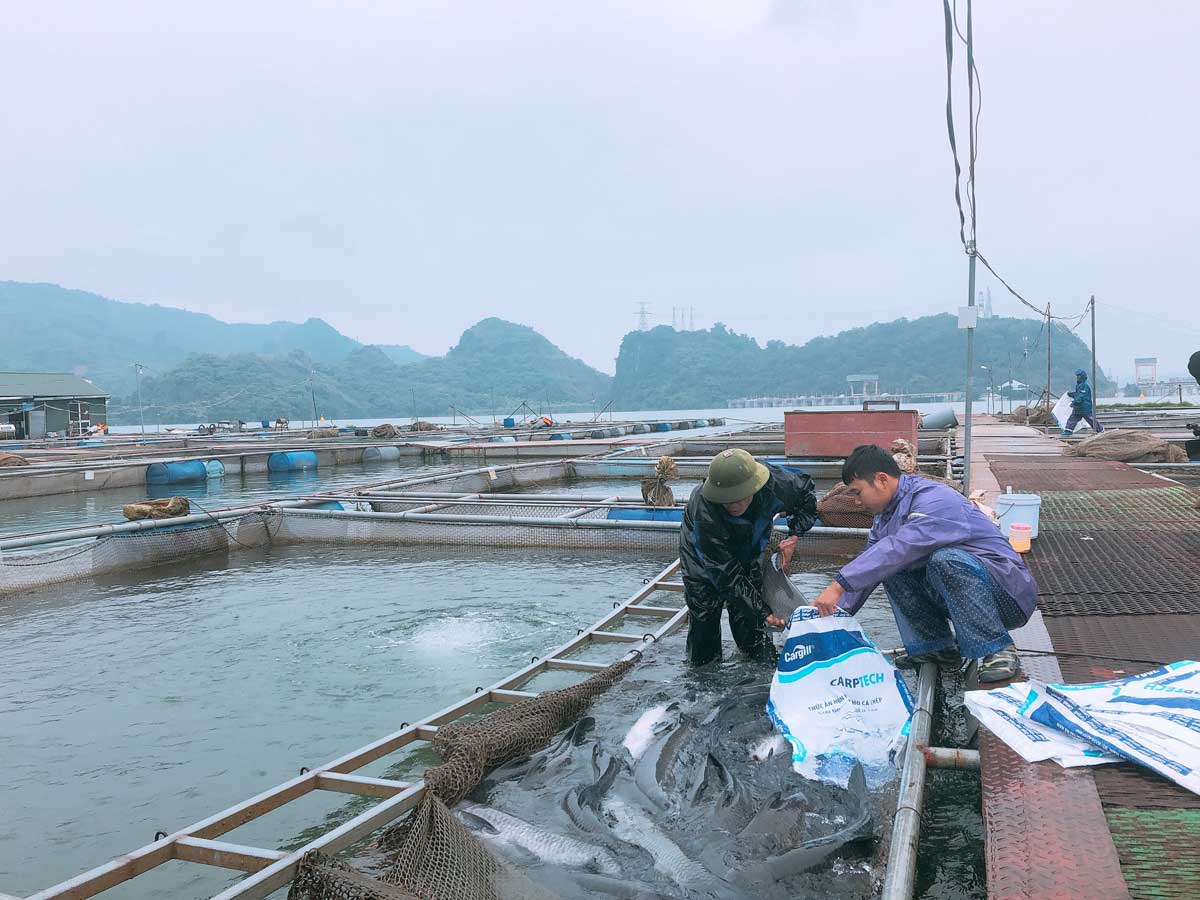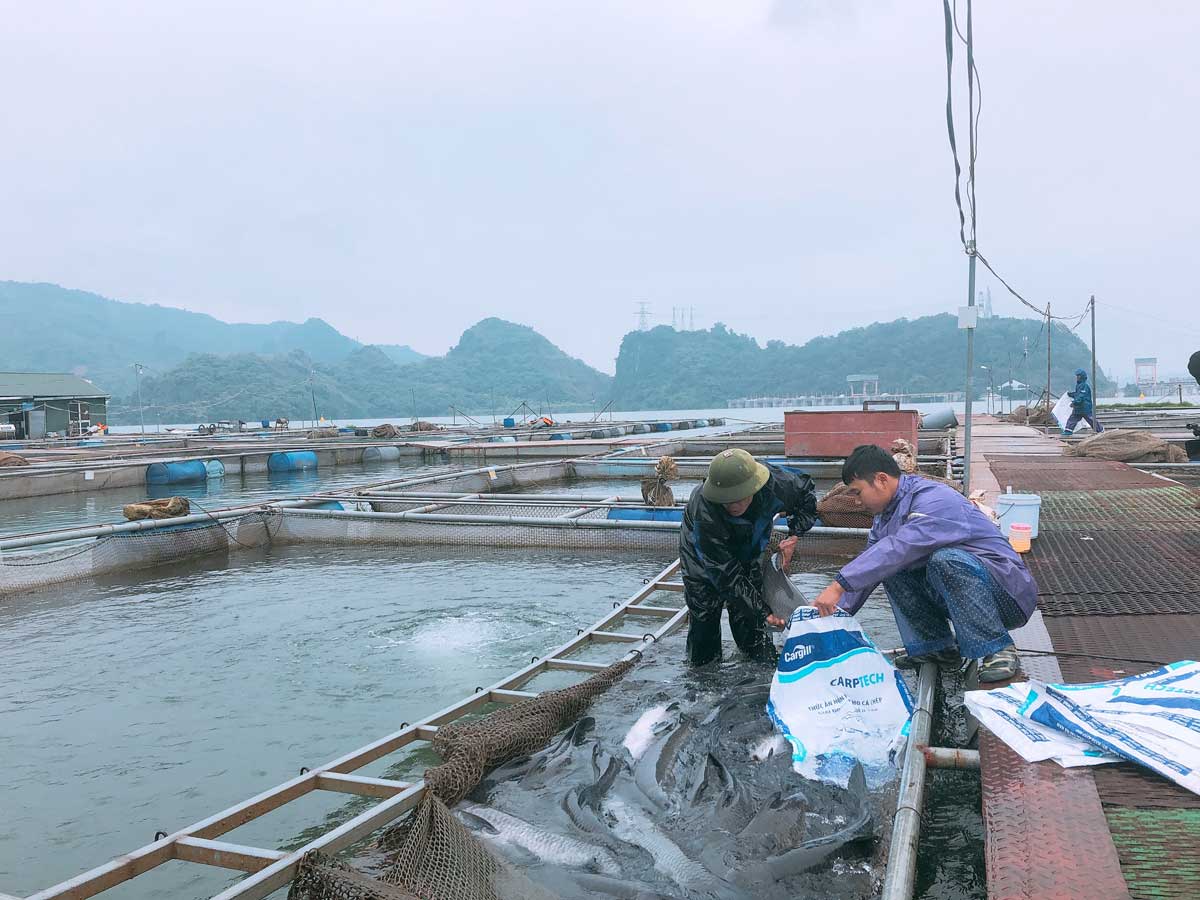
(HBO) - Hoa Binh has so far developed 4,700 fish cages on the Hoa Binh Reservoir, which produce over 4,000 tonnes of fish annually and generate 2,000 stable-income jobs. Businesses and cooperatives involved have invested in advanced technologies and formed production-distribution linkages for higher added value towards creating more products meeting standards of the local One Commune One Product (OCOP) programme.

Hai Dang seafood
limited company works to ensure material sources for its production of fish floss.
To encourage the development of cage fish farming on the Hoa
Binh reservoir, the provincial Party Committee issued Resolution 12/NQ/TU in
June 2014 on the business during 2014 – 2020. Meanwhile, the People’s Committee
issued numerous policies to promote investment in the sector.
Currently, Hoa Binh has 20 cage fish farming establishments with
over 20 cages on average each, and four with more than 100 cages each. Their
products are distributed mainly in Hanoi and northern provinces. Among them,
the Marvin group is implementing a project on raising red snapper and tilapia
using 24 high-tech round cages, the Viet Duc company has 100 sturgeon cages,
and the Cuong Thinh limited company runs 200 cages.
To ensure stable markets for their products, firms and
cooperatives have signed agreements with farmers on following VietGap standard
in fish cage farming. Enterprises like Song Da, Viet Duc, and Minh Phu have
supplied their contracted farmers with fry and animal feed and signed contracts
to cover the distribution of their products.
Abundant material sources and good quality are advantages
for fish raised in cages in Hoa Binh reservoir when joining the OCOP programme,
with various types of fish products meeting the provincial OCOP standards like
fillets from the Cuong Thinh company and fish floss of the Hai Dang seafood
limited company.
To sustainably develop the business in the coming time, the
establishment of fishery cooperatives and investment in expansion are
necessary./.
Hoa Binh province is undergoing a dynamic transformation amid Vietnam’s national digital transition. Building on Poliburo’s Resolution No. 57-NQ/TW on breakthroughs in science, technology, innovation, and national digital transformation, the province has rolled out a wide range of practical action plans. A standout initiative is the "Digital Literacy for All” movement, an effort to ensure that no one is left behind in the digital era.
Hoa Binh province is undergoing a dynamic transformation in the wake of the national digital transformation movement. Building on Resolution No. 57-NQ/TW of the Politburo on breakthroughs in science, technology, innovation, and national digital transformation, the province has implemented a wide range of practical action plans. A standout initiative is the "Digital Literacy for All” movement ambitious effort to ensure that no one is left behind in the digital age.
With a spirit of unity and proactive problem-solving, the Party Committee, the government and the people of Dong Lai Commune (Tan Lac District) have made great strides in implementing the resolutions of the 24th Party Congress of the commune for the 2020 - 2025 term. Focusing on leadership and practical actions, the commune has brought the Party’s resolutions into daily life, creating strong impacts and pushing the local development forward.
Amid the nationwide push for digital transformation, young people in Hoa Binh Province are stepping up as dynamic pioneers, applying technology to enhance Youth Union operations and expand the reach of youth-led initiatives. Through creativity and adaptability, Youth Union organizations at all levels have introduced a series of practical solutions, contributing to modern governance and community development.
In recent years, An Nghia commune, located in Lac Son district, has stepped up administrative reform, focusing on improving the quality and efficiency of its single-window service unit for receiving and processing administrative procedures. These improvements have helped create favourable conditions for local residents and organisations to handle administrative procedures, contributing to the commune’s broader socio-economic development.
The Prime Minister-approved master plan to develop the multi-use value of forests ecosystems through 2030, with a vision to 2050, aims to improve the management and sustainable use of forest resources, create jobs, increase incomes, and improve the living standards of ethnic minorities, people in mountainous and remote areas, forest workers and those living near forests.



